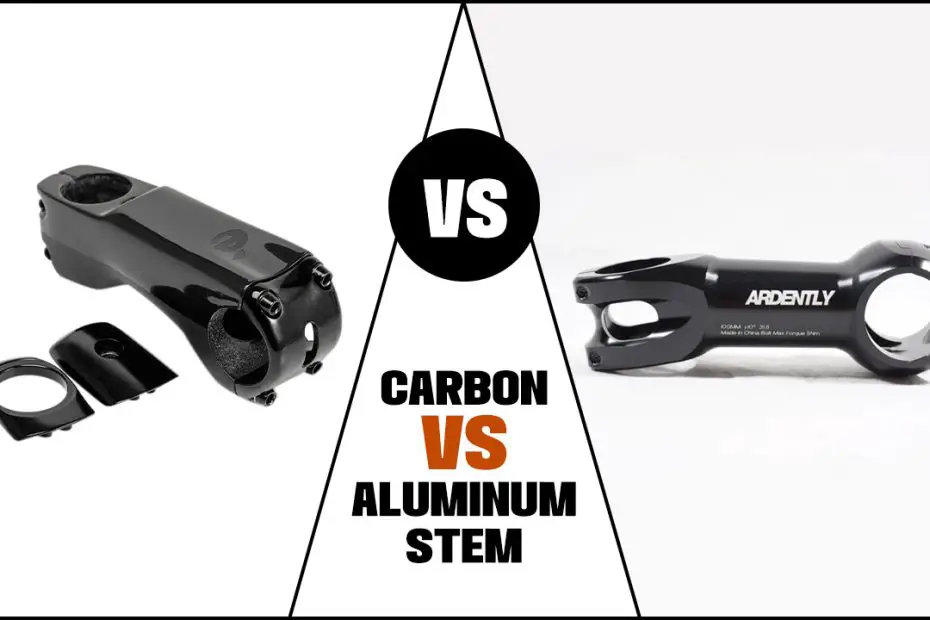Every bike component plays a crucial role in riders’ overall performance and experience when cycling. One such component is the stem, which connects the handlebars to the fork and, ultimately, the front wheel.
Not only does the stem determine the positioning and comfort of the rider, but it also affects the handling and responsiveness of the bike. With the advancement of technology in the cycling industry, stems are now available in various materials, with carbon and aluminium being two of the most popular options.
Both materials have their own unique characteristics and benefits, making it challenging for cyclists to decide which one to choose. Here, we will delve into the debate of carbon vs aluminum stems, discussing their features, differences, and which option may be better for different riders.
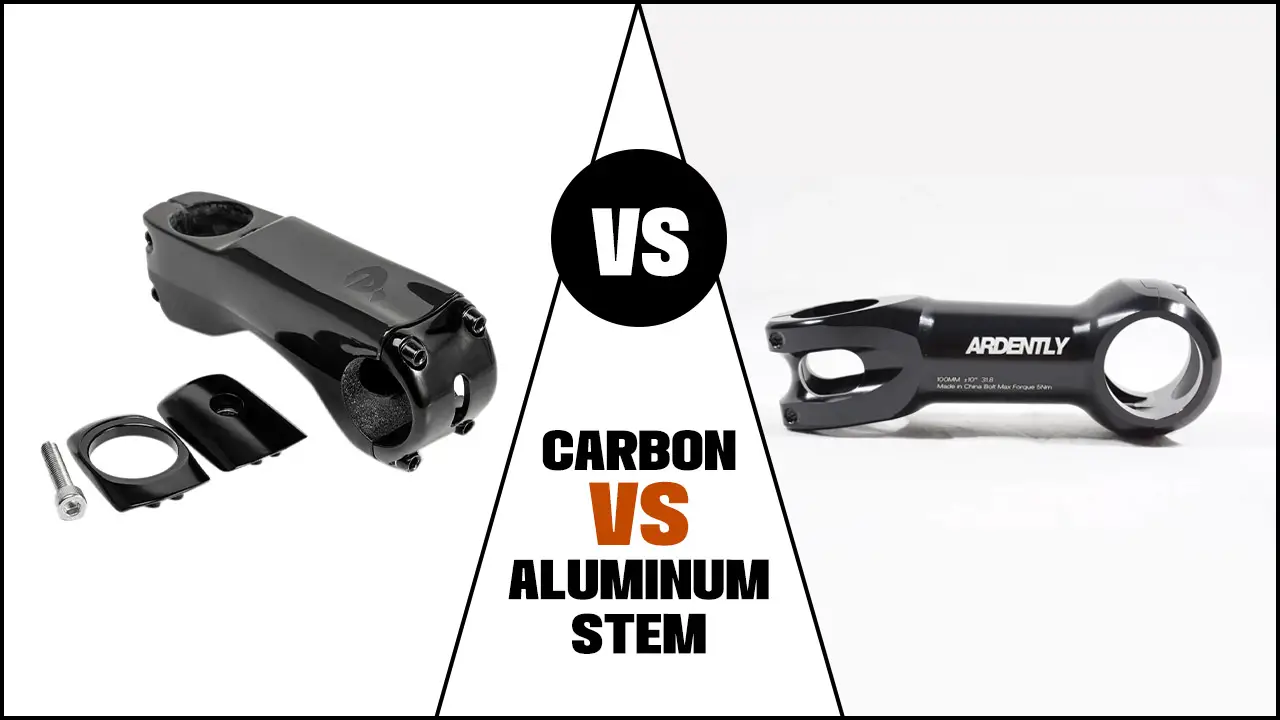
Comparing The Performance And Benefits Of Carbon Vs Aluminum Stems
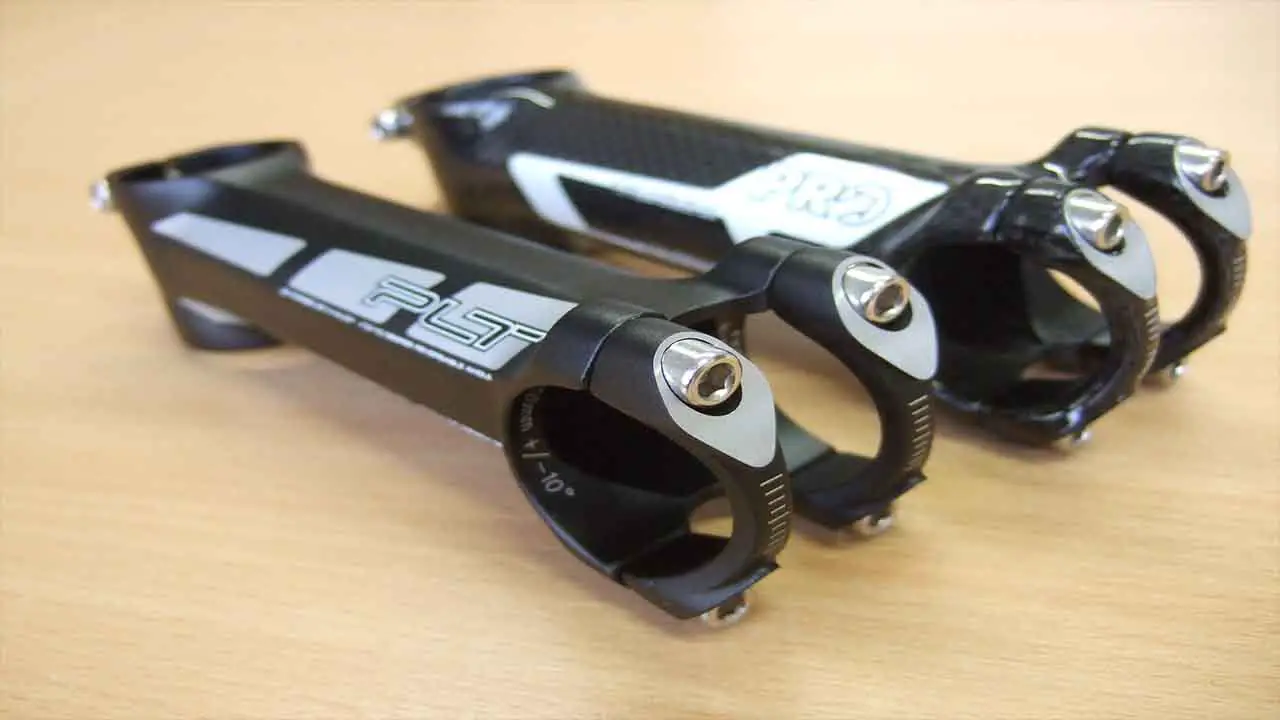
There has been an ongoing debate about bicycle stems between Carbon and Aluminum Stem materials. Both options have advantages and considerations, making it important for cyclists to understand the factors influencing their choice.
Stems play a crucial role in connecting the handlebar to the fork’s steerer tube, providing stability and control to the rider. They are responsible for transmitting the rider’s input to the front wheel, making them a critical component for steering and handling.
One reason the choice of stem material is important is because it directly affects the overall weight of the bicycle. Carbon stems are known for their lightweight properties, making them an attractive option for those seeking to reduce the overall weight of their bike. Here, we will have a detailed discussion below on carbon Vs aluminum Stem:
About Carbon Stems
Carbon stems are popular in the cycling industry, known for their lightweight and high strength-to-weight ratio. These stems, made from carbon fibre, offer several advantages compared to traditional aluminium or steel stems.
One of the main characteristics of carbon stems is their lightweight nature. Carbon fibre is a remarkably light material, allowing cyclists to reduce the overall weight of their bikes. This weight reduction can significantly improve performance, especially during uphill climbs or sprints.
However, Greg Van Avermaet cyclist, used a torque wrench to tighten the carbon stem onto his bike, ensuring the perfect balance between performance and terms of weight in his carbon fiber product featuring carbon rims.
Another advantage of carbon stems is their high strength-to-weight ratio. Although lightweight, carbon stems are incredibly strong and durable, capable of withstanding the rigours of intense riding conditions. This strength ensures the stem remains stable and secure, providing cyclists with confidence and peace of mind.
Features
- Lightweight design
- Stiffness
- Vibration dampening
- Aerodynamic shape
- Durability
- Customizability
- Corrosion resistance
- Sleek appearance
- Easy installation
- Wide availability
Pros
- Lightweight
- Stiffness
- Vibration damping
- Aesthetics
Cons
- Higher cost
- potential vulnerability to damage.
About Aluminum Stems
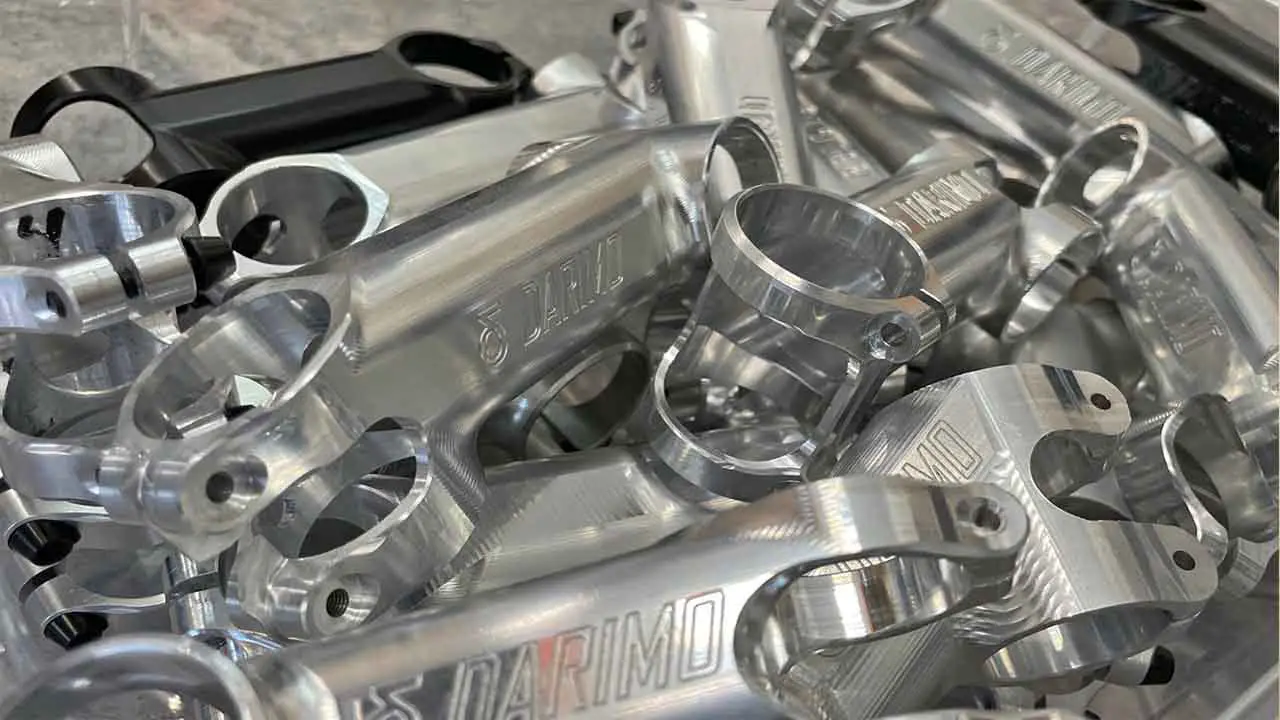
Aluminium stems are an essential bicycle component that provides riders stability and control. These items are made from aluminium, a lightweight metal known for its durability and affordability. Aluminium stems offer various advantages, making them a popular choice among cyclists.
One of the key benefits of aluminium stems is its affordability. Aluminium is more cost-effective than other materials like carbon, making it accessible to many cyclists. Additionally, aluminium stems are highly durable, able to withstand the rigours of everyday use and endure harsh weather conditions.
This durability ensures that the stems have a longer lifespan, offering riders a reliable and long-lasting component for their bicycles. The disc brake version of aluminum stems offers superior stopping power compared to rim brakes, making it ideal for mountain biking enthusiasts. With a wide range of torque specs, riders can fine-tune their stem’s performance to enhance their biking experience.
The rigid nature of aluminium enhances power transfer, allowing cyclists to maximize their pedalling efficiency. The stiffness of aluminium stems also contributes to a more precise steering response, giving riders greater control and confidence during their rides.
Features
- Durable
- Corrosion-resistant
- Stiffness
- Easy to maintain
- Affordable
- Wide range of options
- Vibrational damping
- Compatibility
Pros
- Lightweight
- Corrosion resistance
- Good thermal conductivity
Cons
- Lower strength compared to steel
- Limited availability
How Does A Carbon Fiber Stem Compare To An Aluminum One?
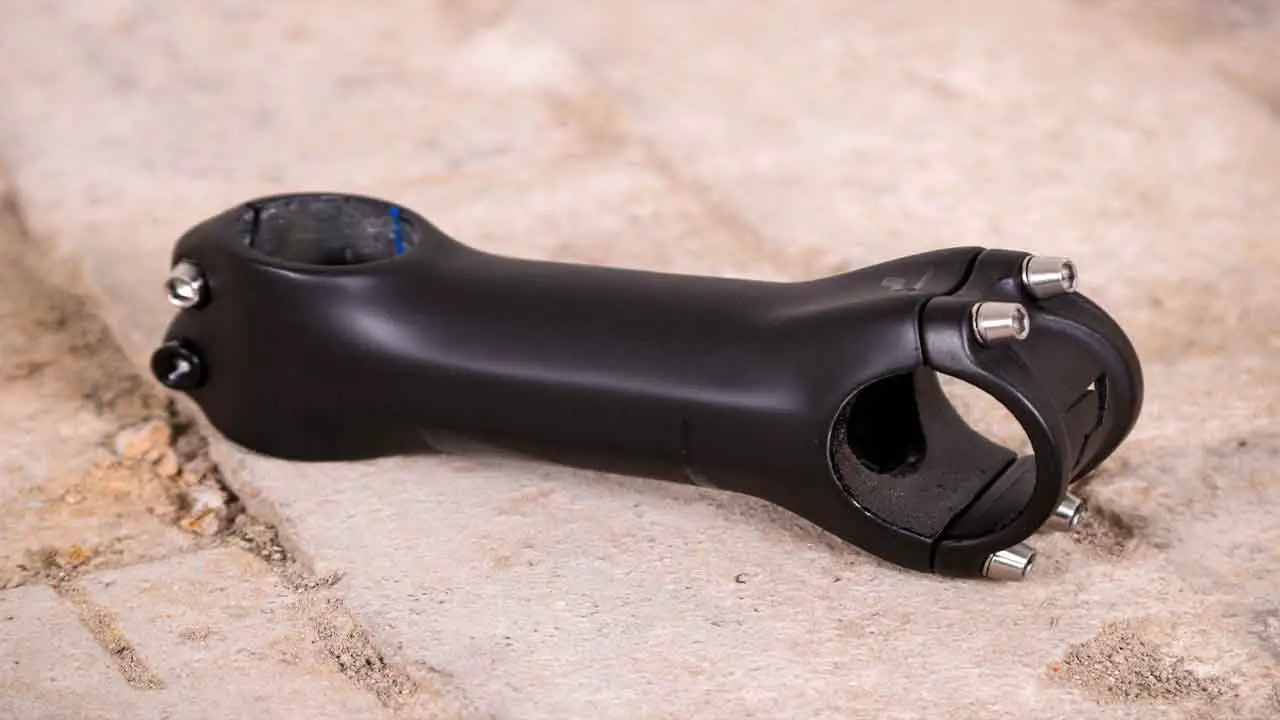
When comparing the performance and benefits of carbon vs aluminum stems, it’s important to consider a few factors. Carbon fibre stems are known for their lightweight and stiff properties, which can improve overall responsiveness and carbon handlebars. They also absorb more vibrations than aluminium stems, providing a smoother ride.
However, carbon version stems can be more expensive and require more maintenance. On the other hand, aluminium stems are generally more affordable and durable, making them a popular choice for mountain biking. Ultimately, deciding between carbon bar or aluminium stems will depend on your preferences and riding style.
Evaluating The Overall Performance Of Carbon And Aluminium Stems
When evaluating, the overall performance of carbon and aluminum stems, several factors come into play. Carbon stems tend to offer a smoother ride due to their ability to absorb vibrations and dampen road chatter. They also have a higher fatigue life compared to aluminium stems, meaning they are less likely to fail over time.
On the other hand, aluminium stems are generally more affordable and can be a good option for riders on a budget. Additionally, if you have alloy bars or carbon wheels, pairing them with an aluminum stem can help weight saving and cater to the weight weenie in you. Ultimately, the choice between carbon and aluminium stems depends on your specific needs and preferences as a rider.
Comparison Of Carbon And Aluminum Stem Weight
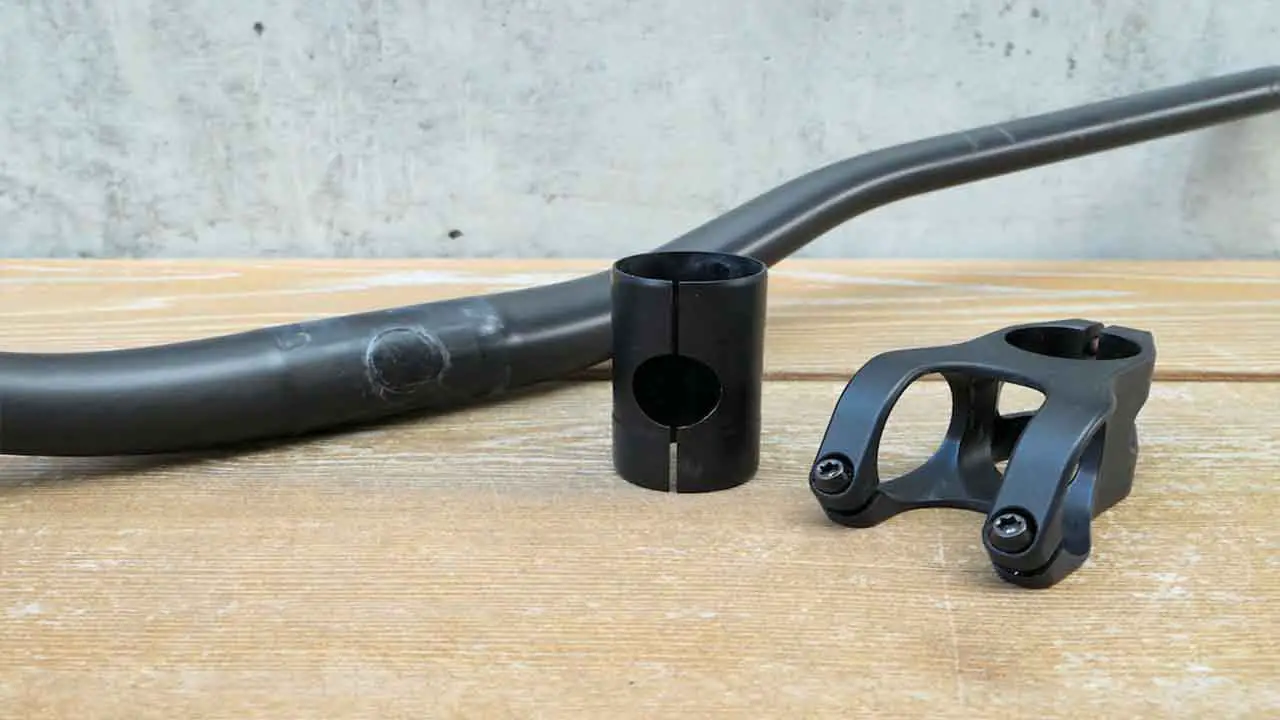
When comparing carbon and aluminium stems, weight is a key factor. Carbon stems are generally lighter than aluminium bar stems, which can help reduce the overall weight of the bike. However, it is important to note that the weight difference may not be significant enough to make a noticeable difference in performance for most riders.
Other factors such as handlebars, brakes, bolts, and torque also play a role in the overall performance of the stem. They should be considered when evaluating their performance on a mountain bike.
Comparison Of Carbon And Aluminum Stem Strength
In terms of strength, carbon stems are generally considered to be stronger and more rigid than aluminium stems. This is due to the unique construction of carbon counterpart fibre, which allows for lighter weight and increased stiffness compared to aluminium.
Carbon road bike stems are particularly popular among cyclists who prioritize performance and are often found on high-end road bikes with carbon frames. However, it is important to note that both carbon construction and aluminium stems can provide adequate strength for most riders, and the choice between the two ultimately comes down to personal preference and budget.
Comparison Of Carbon And Aluminum Stems
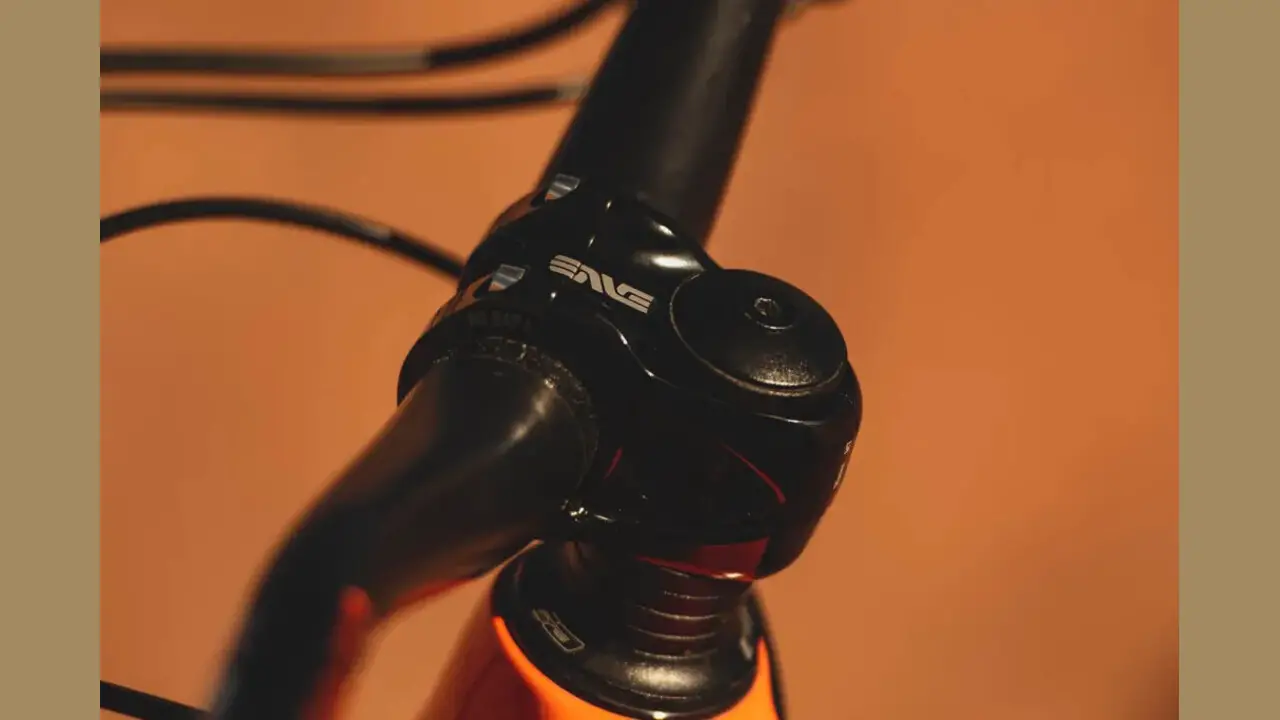
| Aspect | Carbon Stems | Aluminum Stems |
| Weight | Lightweight construction makes for a lighter overall setup | Generally heavier compared to carbon stems |
| Stiffness | Offers excellent stiffness and responsiveness | It provides good stiffness but may not match carbon’s rigidity |
| Vibration Damping | Absorbs vibrations better, resulting in a smoother ride | Transmits more vibrations, leading to a slightly harsher feel |
| Durability | Can be prone to damage from impact or improper installation | More robust and resistant to impact and rough handling |
| Price | Typically more expensive due to the higher cost of materials | Generally more affordable and accessible |
| Aesthetics | Sleek and modern appearance, often with a glossy finish | Available in various finishes and can suit different styles |
| Compatibility | It may have limited compatibility with certain bike models | Widely compatible with most bike frames and components |
| Suitability for Racing | Preferred choice for professional and competitive riders | Popular among recreational riders and budget-conscious |
| Environmental Impact | The manufacturing process has a higher carbon footprint | Requires less energy-intensive manufacturing |
When comparing carbon and aluminum stems, it is crucial to consider their impact on ride quality and performance. Carbon stems are known for their lightweight and stiffness, which can enhance the overall responsiveness of the bike.
This can result in improved power transfer and a more efficient ride experience. On the other hand, aluminium stems offer durability and affordability. It is important to note that individual preferences and riding styles play a significant role in choosing between them.
Are Carbon Bikes More Efficient, Stiff Or Responsive Than Aluminum?
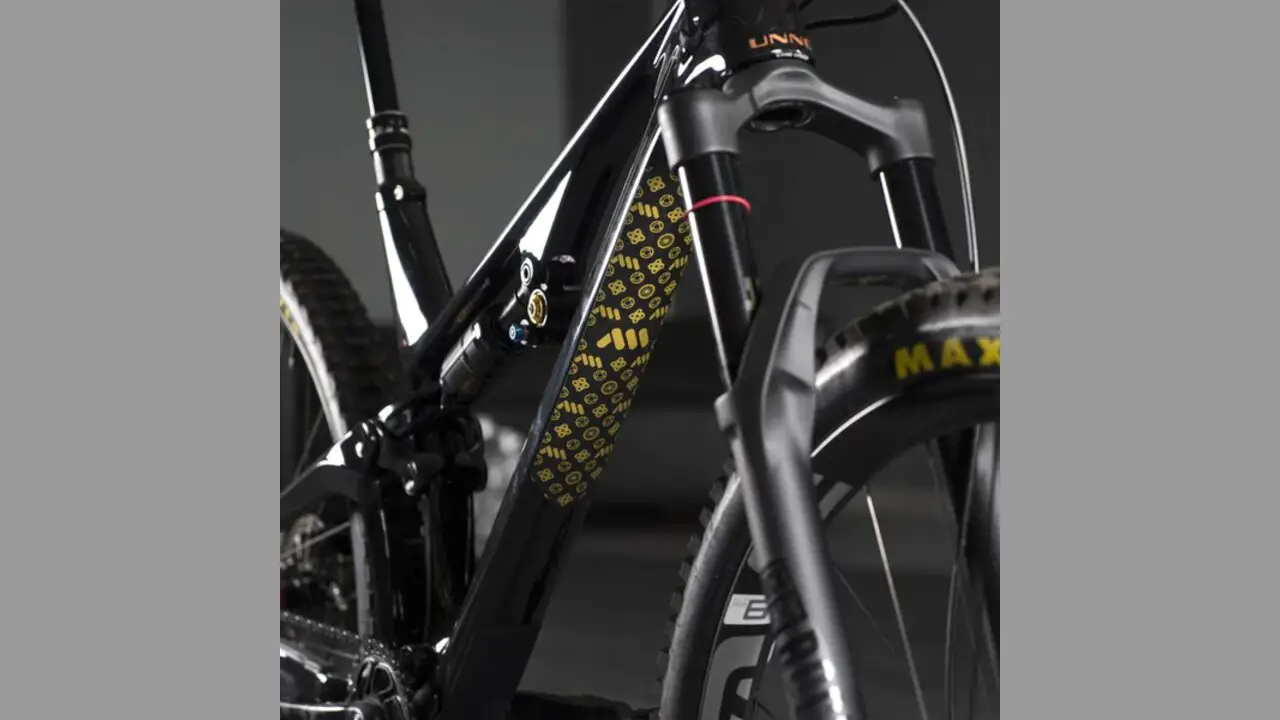
Carbon bike stems are often lauded for their efficiency, stiffness, and responsiveness compared to their aluminum counterparts. Using carbon fibre allows for a lightweight construction, resulting in improved performance and handling.
Carbon stems also tend to absorb vibrations better than aluminum versions, providing a smoother ride. However, it is important to note that aluminum stems can still offer excellent performance at a more affordable price point. Additionally, some riders may prefer the durability and reliability of an aluminum handlebar over a carbon version.
Conclusion
When choosing between Carbon and Aluminum Stems, there are several factors to consider. While carbon stems may offer a lightweight and sleek design, they can also come with a higher price tag and may not be as durable as aluminium. On the other hand, aluminium stems may offer a more affordable option and can still provide a solid ride experience.
Ultimately, the decision should be based on the rider’s needs and preferences. Access to carbon rims and an affordable aluminium frame may make a carbon stem a worthwhile investment, while the additional weight and meaningful difference in terms of stiffness may not be worth it for others.
It’s also important to consider actual fatigue levels and the use of alternative steel bolts when making this decision. In the end, both carbon and aluminium body stems offer their own unique benefits, and it’s up to the rider to weigh them accordingly. And you could choose by knowing the basic difference between carbon Vs aluminum stem.
Frequently Asked Questions
Are Carbon Stems Better?
Carbon stems tend to be lighter in differences in weight than aluminum stems. This can be beneficial for those looking to reduce the overall weight of their bike.
Can You Use An Aluminium Stem With Carbon Bars?
Yes, it is possible to use an Aluminium frame stem with carbon bars. However, there may be a slight weight penalty compared to using a full carbon stem.
Are Carbon Fiber Stems Safe?
Yes, carbon fibre stems are generally considered safe for use in bicycles. They are lightweight and can provide a noticeable difference in reducing weight and adding stiffness to the bike’s front end, resulting in improved handling and performance.
What Is The Advantage Of Negative Stem Mtb?
The advantage of a negative stem on an MTB (Mountain Bike) is that it can provide a more aggressive and aerodynamic riding position. This can help improve control and stability while riding downhill or in technical terrain.
What Is The Point Of A Negative Stem?
A negative stem is a type of bicycle stem with a negative angle. This means that the stem is angled lower than the handlebar, which puts the rider in a lower riding position. The main purpose of a negative stem is to increase stability and improve handling on the bike, allowing for more aggressive cornering or descending.

I am passionate about writing blogs about bikes. I love riding my bike and love talking about it even more. My blog is the perfect place for anyone who loves biking as much as I do. Come check it out and learn some tips and tricks from me!
